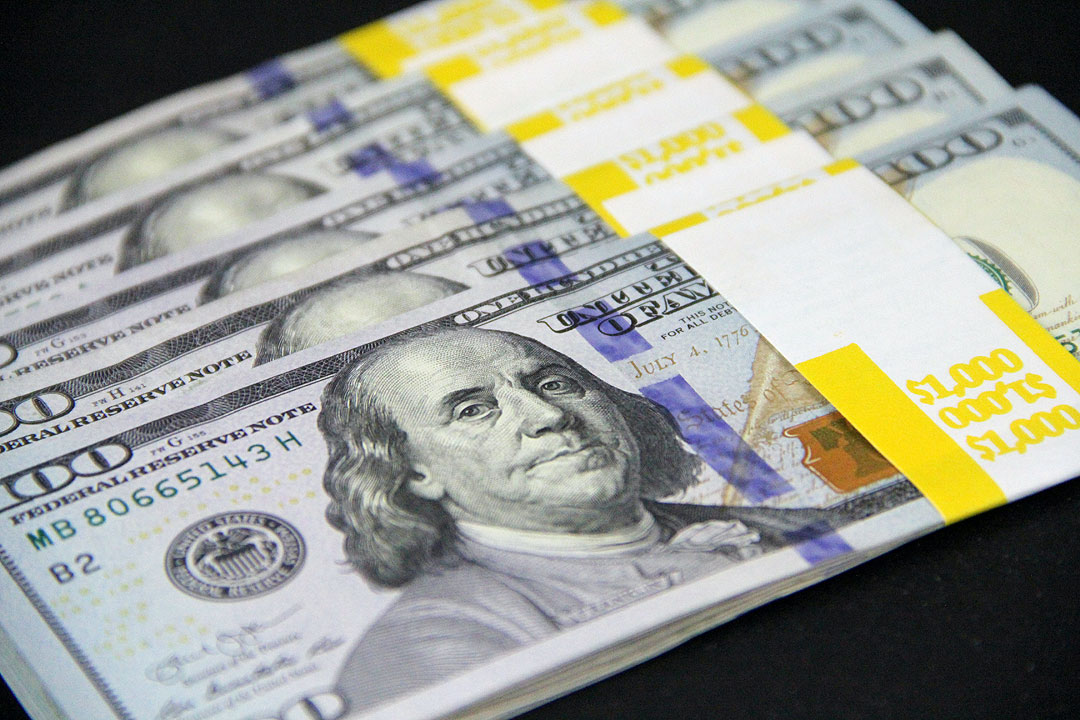
THE UNITED STATES’ latest credit rating downgrade could benefit the Philippines and other emerging markets as this could prompt investors to diversify their portfolios.
“The US credit downgrade is negative for US dollar and US dollar-denominated assets but positive for the peso as global funds diversify into non-dollar assets, including emerging market asset classes. The Philippines is part of the emerging market universe,” Cristina S. Ulang, head of research at First Metro Investment Corp., said.
“It’s possible the downgrade could lead some investors to diversify away from dollar assets,” Luis A. Limlingan, head of sales at Regina Capital Development Corp., said in a Viber message. “This may create an opportunity for markets like the Philippines, but any shift would depend on broader risk sentiment and how local fundamentals compare with other emerging markets.”
Moody’s Ratings last week cut the US’ long-term issuer and senior unsecured ratings to “Aa1” from “Aaa,” revising its outlook to “stable” from “negative.”
The debt watcher said this downgrade “reflects the increase over more than a decade in government debt and interest payment ratios to levels that are significantly higher than similarly rated sovereigns.”
The move stripped the US of its last triple-A rating from the big three credit raters. In 2011, S&P Global Ratings cut the US’ sovereign long-term credit rating to “AA+” from its top investment grade of “AAA.” Fitch Ratings in 2023 also downgraded the country’s rating to “AA+” from “AAA.”
The Philippines holds investment-grade ratings from all three debt watchers. S&P in November last year kept its “BBB+” long-term credit rating for the country, a notch below the “A” level grade targeted by the government, and raised its outlook to positive.
Meanwhile, Fitch and Moody’s rate the Philippines at “BBB” and “Baa2,” respectively, with stable outlooks, which are a level below S&P’s rating. Fitch affirmed its long-term rating in April, while Moody’s latest sovereign rating action was announced in August 2024.
The Philippines’ manageable debt-to-gross domestic product (GDP) ratio could make it a preferred option for investors, Ms. Ulang said.
The government is seeking to bring the debt-to-GDP ratio down to 60.4% by the end of 2025, and to 56.3% by 2028. Debt as a share of GDP stood at 62% at the end of the first quarter.
BDO Senior Vice-President and Trust and Investments Group Head Frederico Rafael D. Ocampo said the fiscal concerns cited by Moody’s for the rating downgrade could cause US assets to perform weaker in the near term as investors look for other markets.
“While the immediate reaction following the announcement was a sell-off across most US assets, the move has been partially retraced on investors looking to take advantage of cheap valuations,” Mr. Ocampo said in a Viber message.
“Looking ahead, we anticipate US-denominated portfolios to trade weaker following a broader de-risking in US assets in the near term, especially if the US government fails to address the more systemic issue of a growing deficit funded by more borrowings.”
Mr. Ocampo added that elevated long-term rates could “add pressure on portfolios with substantial exposures in the tail end of the yield curve, such as those of insurance companies and pension funds.”
BORROWING COSTSBank of the Philippine Islands (BPI) Lead Economist Emilio S. Neri, Jr. likewise said that higher rates could affect borrowing costs.
“Investors may demand higher yields on US government debt to compensate for the perceived increase in risk,” Mr. Neri said in a Viber message. “This could impact local corporates in the Philippines with dollar-denominated debt, as they may face higher borrowing costs.”
However, the rise in interest rates could be marginal as the US’ credit rating is still high, even with the latest downgrade.
“In addition, local corporates or investors holding US Treasuries could see a decline in the value of their holdings if yields rise, since bond prices typically move inversely with interest rates,” he said.
“Spillover effects on emerging markets in general might be on higher borrowing costs when there is a demand for higher premiums with higher risk due to the downgrade pushing rates relatively higher,” Mr. Limlingan added.
Meanwhile, Leonardo A. Lanzona, an economics professor at Ateneo de Manila University, said that while the downgrade could trigger a shift away from US risk assets, the Philippines may not necessarily be the first choice for investors.
“Since the Philippines is tied to the US, I don’t think (there) will be investing in the Philippines. Countries that have divested from US assets are more likely to gain. Canada and Europe may have done so already,” he said in an e-mail.
“Filipino investors can shift their investments in other countries, although the options can be limited to China.”
Mr. Lanzona added that the US economic concerns flagged by Moody’s would also have a negative impact on the Philippines.
“This can have both real and financial effects on the country. In the real sense, the country will be affected since the US is the country’s top importer.”
The Philippines should implement economic policies that “favor domestic production and greater protection for the workers,” he said, especially amid global uncertainties.
“Enhancing technological innovation within the country and greater flexibility for firms and workers should be given priority,” Mr. Lanzona added. — Luisa Maria Jacinta C. Jocson and Aaron Michael C. Sy